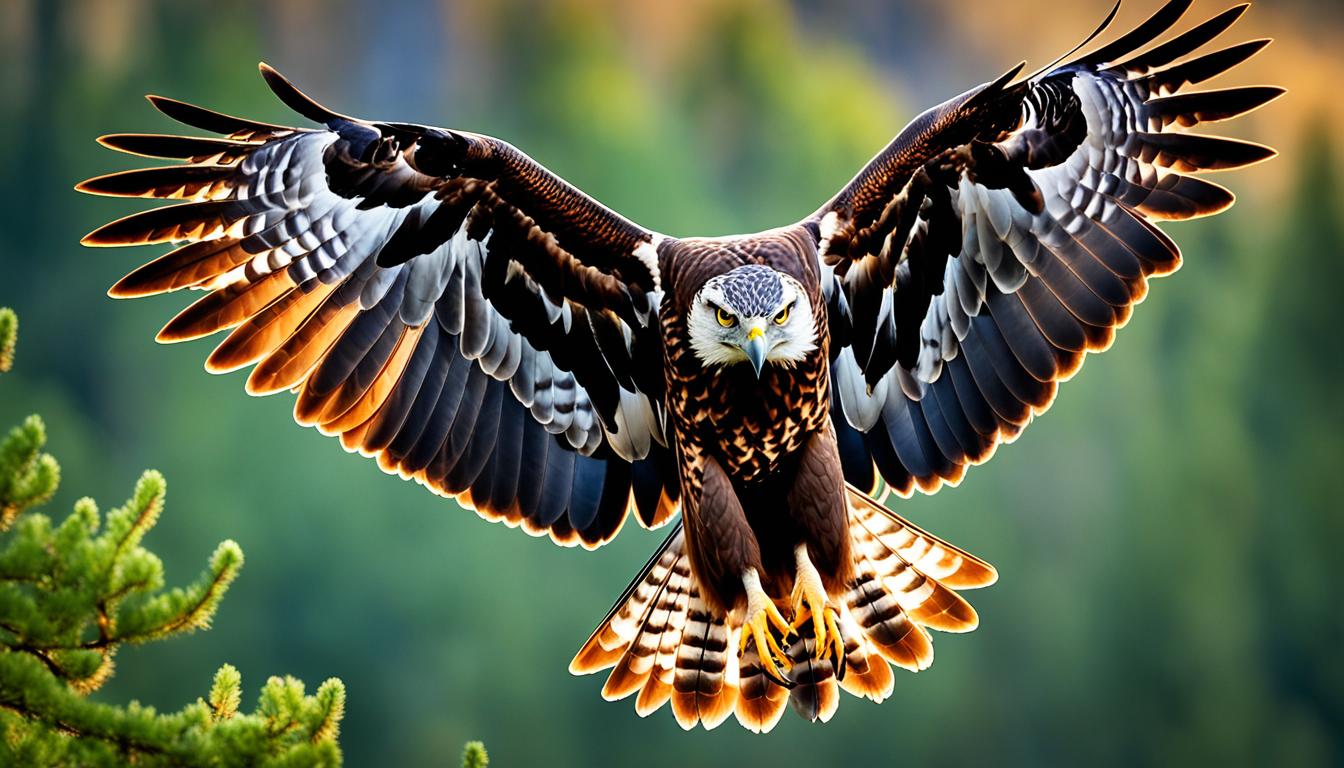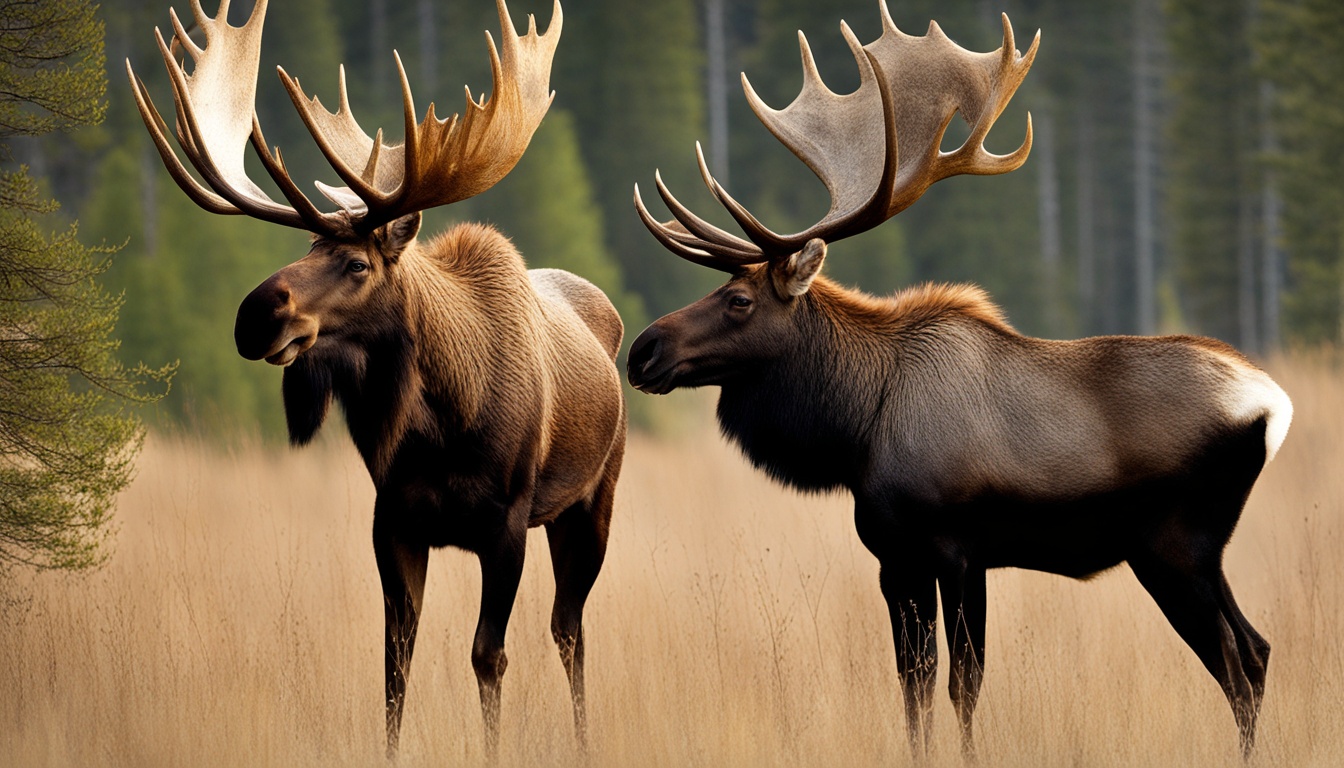As one of the most iconic symbols of America, the bald eagle has long been a subject of fascination and admiration. However, there are still many misconceptions about these majestic birds, including the belief that they have teeth. Understanding the anatomy of bald eagles is important in appreciating their role in the ecosystem and the conservation efforts to protect them.
Key Takeaways:
- Bald eagles do not have teeth, contrary to popular belief.
- Their beak and talons have evolved to compensate for the absence of teeth, allowing for efficient feeding and hunting.
- Bald eagles have exceptional eyesight and powerful grip, contributing to their role as apex predators.
- Conservation efforts have been successful in protecting bald eagles, but continued support is necessary to ensure their survival.
The Eagle Beak: A Formidable Weapon
When you think of the bald eagle’s anatomy, the first thing that comes to mind is probably their sharp and powerful beak. And for good reason; the eagle’s beak is an incredible tool for hunting and survival.
First and foremost, the bald eagle’s beak is incredibly sharp, which allows them to easily tear apart prey. But it’s not just sharp; the beak is also strong and sturdy, capable of crushing the bones of their quarry. Additionally, the beak is versatile, with different parts serving different purposes. The hook on the end of the beak allows eagles to grip onto and carry their food, while the sharp tip is used for tearing and feeding.
The Eagle Beak: A Formidable Weapon
What’s truly impressive about the bald eagle’s beak is its ability to adapt to different types of prey. Their beaks are not one-size-fits-all; instead, they are specifically designed to tackle the different prey they encounter in their environment. For example, eagles that primarily feed on fish have a slightly different beak shape than those that hunt mammals, with a more curved tip to help grasp slippery fish.
But it’s not just the physical structure of the beak that makes it such a powerful weapon. The muscles that control the beak are incredibly strong, allowing bald eagles to deliver a powerful bite. In fact, their bite force is stronger than that of a pitbull, despite the absence of teeth.
An Exclusive Dental Feature: Absence of Teeth
Despite popular belief, bald eagles do not have teeth. Their beaks have evolved to compensate for the absence of teeth, allowing them to capture and consume their prey efficiently. The evolutionary adaptation of their beak has made it an exceptional tool for hunting and feeding.
The bald eagle’s beak is composed of a hard, keratinous material that grows continuously throughout their lives. The top and bottom part of their beak are called the upper and lower mandible, respectively, and they are joined by a movable joint that enables them to open and close their beak with ease.
The sharp, curved tip of their beak is used for tearing into food, while the hooked shape helps them grip and carry prey. Additionally, their beak’s serrated edges aid in breaking down food for digestion and help in processing their diet.
Overall, while bald eagles may not have teeth, their beaks provide them with many advantages in hunting, feeding, and surviving in their natural habitats. Understanding the anatomy and function of the bald eagle’s beak is essential for appreciating and protecting these majestic birds.
The Beak’s Role in Feeding
One of the most striking features of a bald eagle’s anatomy is its beak, which is perfectly adapted for capturing and consuming prey. With its sharp edges and powerful muscles, the beak is a formidable weapon that allows the eagle to tear, grip, and carry food with ease. The curved shape of the beak is especially important, as it allows the eagle to capture food without losing its grip.
The beak also plays a crucial role in the eagle’s feeding habits. Unlike mammals, birds do not have teeth, and so their beaks serve as their primary means of breaking down and chewing food. In the case of the bald eagle, the beak is used to tear apart food into manageable pieces that can be more easily consumed.
Given the eagle’s diet of fish and other animals, the beak has also evolved to be particularly well-suited to cracking open hard shells. This is accomplished through a combination of strong muscles and a ridged surface on the inside of the beak, which allows the eagle to exert a great deal of force without causing damage to the beak itself.
Exceptional Eyesight: A Hunter’s Advantage
You might be surprised to learn that bald eagles do not have teeth in their beaks. However, they have evolved to compensate for this with exceptional eyesight. Bald eagles have some of the strongest and keenest vision in the animal kingdom, allowing them to spot prey from incredible distances.
With a visual acuity of up to 20/5, they can see eight times better than humans. This impressive eyesight is aided by their ability to adjust their focus quickly and accurately, both in bright sunlight and low light conditions.
Their eyes are also uniquely adapted to help them see through the water’s surface, allowing them to spot fish swimming beneath the surface from high above.
“Bald eagles can spot prey from over a mile away, making their exceptional eyesight a vital tool for their hunting success.”You might have thought that bald eagles have teeth, but their formidable eyesight is all they need to be top hunters in the animal kingdom.
Adaptations for Digestion
While bald eagles lack teeth, they have evolved a digestive system that efficiently processes their diet.
After using their sharp beak and talons to break down and tear apart food, the eagle’s crop stores the food before moving on to the muscular stomach. Here, the gizzard uses small stones to grind and pulverize the food, preparing it for digestion in the intestines.
Bald eagles have a unique adaptation in their digestive system where they can store food in their crop for up to 24 hours. This allows them to consume larger prey that cannot be eaten in one sitting.
Their digestive system has also adapted to break down bones and feathers, which are indigestible for most animals. This gives bald eagles the ability to consume the entire prey, leaving no trace behind.
A Closer Look at Bald Eagle Bites
Contrary to popular belief, bald eagles do not have teeth. Instead, their powerful bite force comes from the muscles in their beak. Their sharp and curved beak shape allows them to grip and tear apart prey with ease. The bald eagle’s bite force is estimated to be around 400 pounds per square inch, which is almost 10 times stronger than the human bite force.
Not only can bald eagles bite with tremendous force, but their beak also has a crushing ability. This means that they can easily break the bones of their prey for easier consumption.
Next time you see a bald eagle soaring overhead, remember that their formidable beak is their main weapon, not teeth. It’s just one of the many fascinating adaptations that make these birds of prey so awe-inspiring.
The Growth and Wear of Beaks
The beaks of bald eagles are a key component of their anatomy and survival. Their beaks continuously grow throughout their lives, much like human fingernails or hair. The growth rate of a bald eagle’s beak varies depending on a number of factors, such as age, diet, and environment.
As the beak grows, it is also naturally worn down through use. The bald eagle’s diet of mainly fish and other prey items can cause wear and tear on their beak, but they are also capable of self-maintenance. Bald eagles will rub their beaks on rough surfaces, such as tree bark, to keep them sharp and functional.
Interestingly, bald eagles also have the ability to shed and replace their beaks over time. This process ensures that their beaks remain functional and effective in capturing prey. The new beak will grow in place of the old one, allowing the bald eagle to continue thriving in its habitat.
Unique Beaks in the Bird World
Now that you know bald eagles do not have teeth, let’s compare their beaks to other bird species. The beak is a vital tool for birds, and every species has a unique shape and size to suit their feeding habits.
For example, the long, thin beaks of hummingbirds are perfect for sipping nectar from flowers, while the sturdy, conical beaks of finches crack open seeds. The curved, sharp beaks of eagles are designed to tear apart and grip prey.
Unlike some other birds, eagles do not have teeth, but their beaks are still an effective tool for hunting and feeding. And while it may seem strange to us humans, the absence of teeth is just one of the many adaptations that make eagles such incredible creatures.
An Overview of Bald Eagle Conservation
If you are interested in wildlife conservation, then you know that the bald eagle has a rich history of protection and preservation. These majestic birds were at risk of extinction due to hunting, habitat loss, and pesticide poisoning, but thanks to collaborative efforts by government agencies, wildlife organizations, and concerned citizens, their population has rebounded in recent years.
In 1963, the bald eagle was declared an endangered species under the Endangered Species Act. This provided legal protection for their nesting sites and habitats. By 2007, their population had recovered enough to be removed from the list of endangered species and listed as threatened instead. The bald eagle population continues to increase, and they are no longer considered at risk of extinction.
The ongoing conservation efforts include the protection of nesting sites and habitats, as well as the enforcement of laws against hunting and persecution. Bald eagles are also affected by environmental pollution, and efforts are being made to reduce and eliminate toxins in the environment that could harm them.
| Success Stories | Organizations Involved |
|---|---|
| Removal of bald eagle from the endangered species list | US Fish and Wildlife Service |
| Bald eagle populations in Michigan and Wisconsin reaching record highs | The Nature Conservancy, Wildlife Conservation Society |
| Protection of bald eagle habitats from oil extraction | National Audubon Society |
Your support is crucial to ensuring the continued success of bald eagle conservation. This can include donating to organizations that protect wildlife habitats, reporting any hunting or harassment of bald eagles, and taking steps to reduce pollution in your community.
Bald eagles are an iconic symbol of America’s natural heritage. By working together to protect them, we can ensure that they continue to thrive for generations to come.
Conclusion
Now that you’ve learned the truth about bald eagles, you can appreciate their incredible anatomy even more. Even though they don’t have teeth, their beaks are incredibly powerful and versatile tools that allow them to hunt and feed efficiently. Their exceptional eyesight and digestive adaptations further enhance their predatory skills.
Supporting Conservation Efforts
It’s important to remember that bald eagles are protected by law and their conservation is essential for their survival. By supporting habitat preservation and conservation efforts, we can ensure that these magnificent birds continue to thrive in the wild.
Next time you see a bald eagle soaring through the sky or perched atop a tree, you can now appreciate the fascinating details of their anatomy and the incredible adaptations that allow them to survive and thrive in their environment.
Are Bald Eagles Born with White Heads or Does the Color Change as They Mature?
Bald eagle head color variations revealed as they mature. A common misconception is that bald eagles are born with white heads, but their head color actually changes gradually over time. Young eagles have predominantly dark heads, which gradually lighten as they age. The transformation usually takes around five years, as they reach sexual maturity.
FAQ
Q: Do bald eagles have teeth?
A: No, bald eagles do not have teeth. Contrary to popular belief, their beak is their main tool for capturing and consuming prey.
Q: What is the function of a bald eagle’s beak?
A: The bald eagle’s beak is a formidable weapon. It is sharp, strong, and versatile, allowing the eagle to tear, grip, and carry prey.
Q: Why don’t bald eagles have teeth?
A: Bald eagles have evolved to have a beak instead of teeth. The beak compensates for the absence of teeth and has adapted to aid in capturing and consuming food.
Q: How does a bald eagle’s beak contribute to its feeding habits?
A: The beak of a bald eagle plays a crucial role in its feeding. Its curved shape helps in capturing and consuming food, while its sharpness allows the eagle to tear apart prey.
Q: How is a bald eagle’s eyesight important for hunting?
A: Bald eagles have exceptional eyesight, which compensates for the absence of teeth. Their sharp vision enables them to spot and target prey from great distances.
Q: How does a bald eagle’s digestive system process food?
A: Bald eagles have adapted their digestive system to efficiently process their diet. The beak and talons play a role in breaking down and tearing apart food for digestion.
Q: Do bald eagles have a strong bite?
A: While bald eagles do not have teeth, they possess a strong bite force. This force comes from the muscles in their beak and allows them to grip and crush their prey.
Q: How do bald eagle beaks grow and wear down?
A: Bald eagle beaks continuously grow and naturally wear down over time. They are replaced as needed, ensuring the functionality of the beak.
Q: How are bald eagle beaks different from other bird species?
A: Bald eagle beaks lack teeth, unlike some other bird species. The adaptability and diversity of bird beaks for different feeding habits is remarkable.
Q: Why is it important to support bald eagle conservation?
A: Bald eagles are a protected species, and understanding their anatomy is essential for their conservation. Supporting habitat preservation is crucial to ensure their survival.











